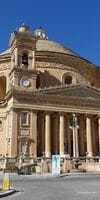The Mosta Rotonda (Mosta Rotunda, Maltese name: Ir-Rotunda tal-Mosta) is the sanctuary of the Basilica of the Ascension of the Virgin or Virgin Mary (Santwarju Bažilika ta 'Santa Marija), which is a Roman Catholic parish church in the city of Mosta (Il-Mosta) on the island of Malta.
The Mosta Rotonda is the largest and most famous church in Malta, and has one of the largest unsupported domes in the world (37 meters in diameter).
This is a functioning basilica - services are held in it.
Within the walls of the basilica there is a museum of a bomb that hit the church and did not explode during World War II.
In the church, you can climb under the dome and go out to the outdoor terrace, which offers panoramic views, as well as visit the museumified underground shelter from the Second World War.
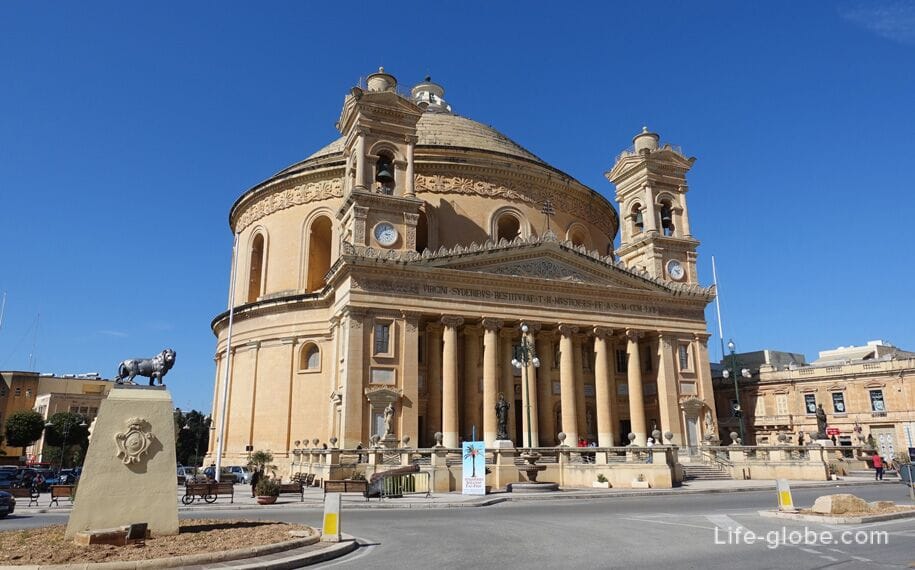
The first stone of the modern Church of the Rotunda Mosta was laid on May 30, 1833, and construction was completed in 1860. The construction of the shrine was carried out according to the projects of the Maltese architect Giorgio Grognet de Vassé (Giorgio Grognet de Vassé) according to the structure based on The Pantheon in Rome and on the site of an earlier church built around 1614 by the Maltese Renaissance architect Tommaso Dingli.
The new church was built around the old church, which was used throughout the construction period and was demolished in 1860. Mosta residents helped build the church by participating in construction work on Sundays and holidays.
The church was officially consecrated on October 15, 1871 in honor of the Assumption of the Blessed Virgin Mary.
The Rotunda Mosty is made of yellow sandstone in the neoclassical style. It has a diameter of 55.2 meters on the outside and 39.6 meters on the inside. The façade of the church with two bell towers faces south and has a six-column Ionic portico.
The church is a rotunda and has a circular plan.
The world-famous dome of the basilica has no support, but retains its integrity, since it is built on the principle of a chain profile. Thus, each row of stones is placed on top of the lower one, so that each row prevents the destruction of the structure.
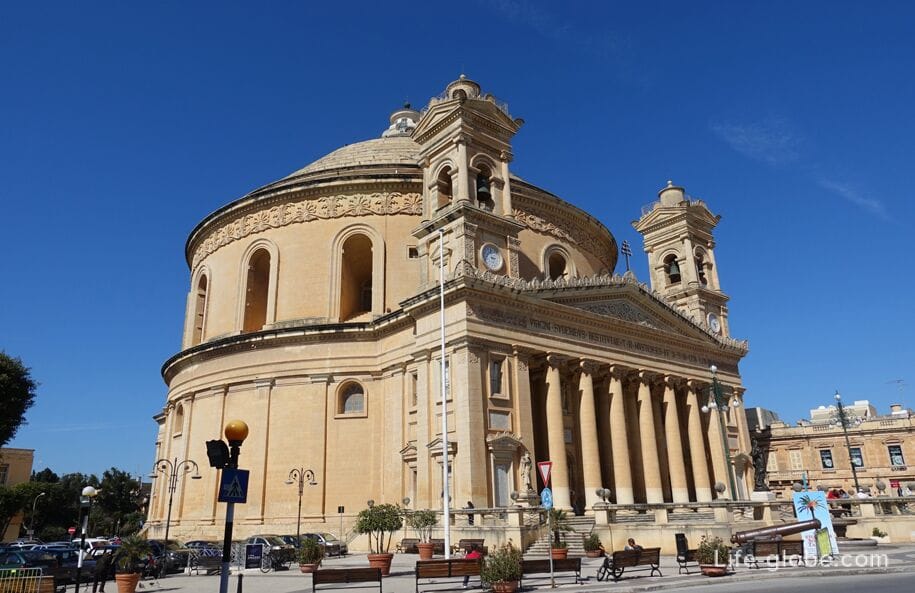
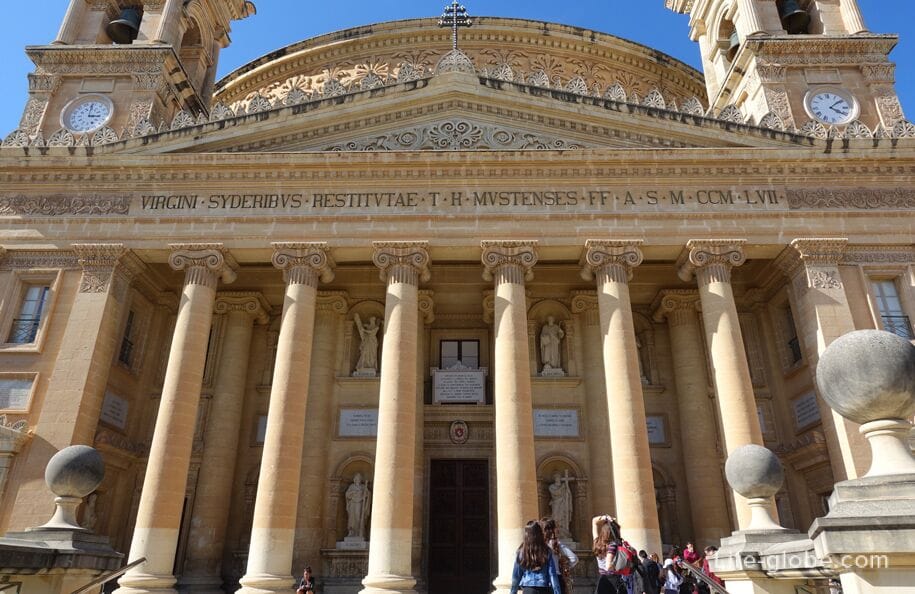
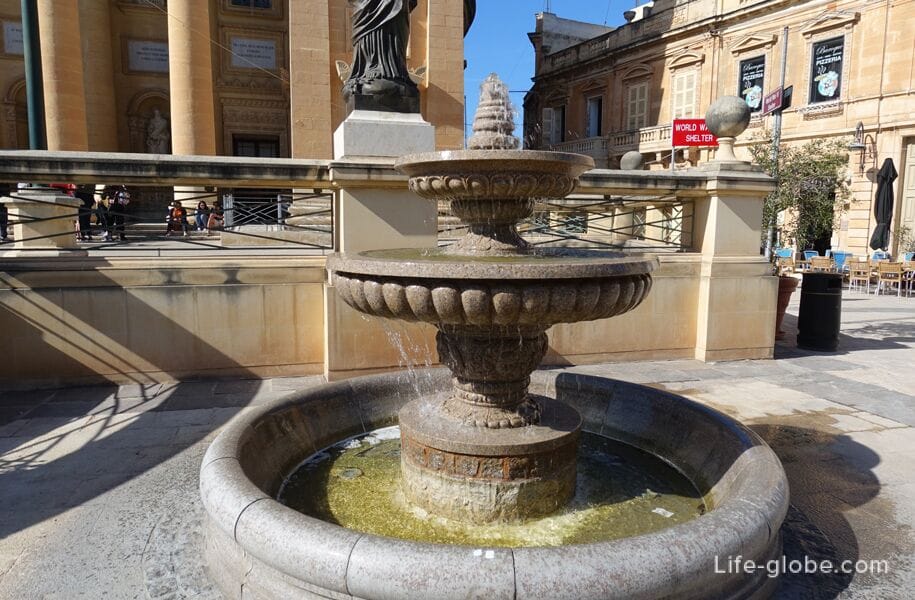
The internal height of the church is 54.7 meters.
The rotunda church is decorated with many paintings by Giuseppe Cali and other talented artists.
The interior is decorated with gilding, frescoes and marble.
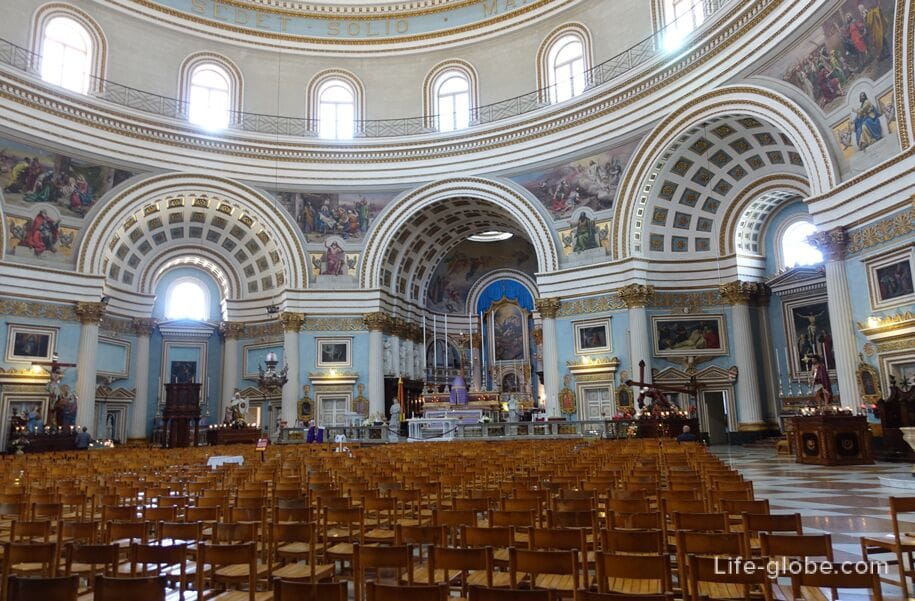
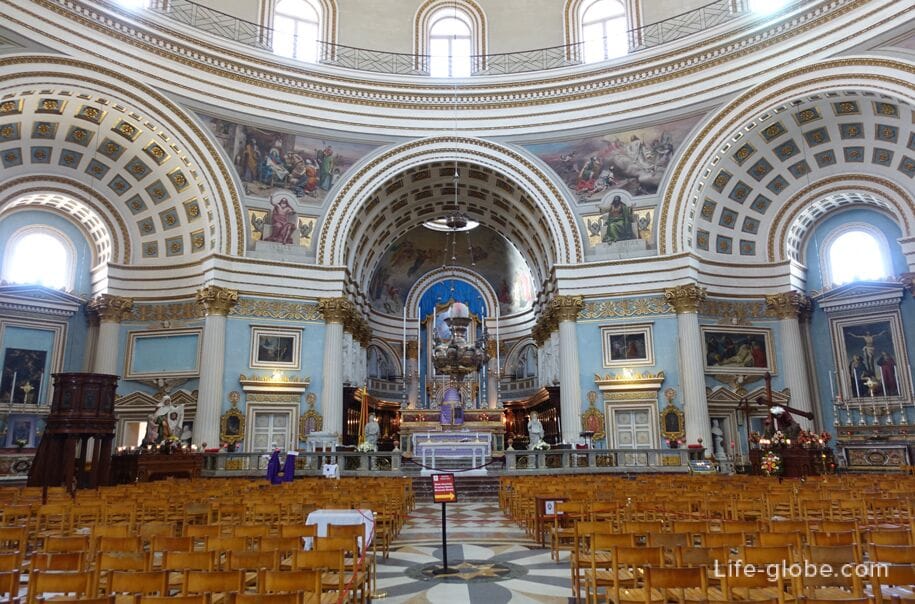

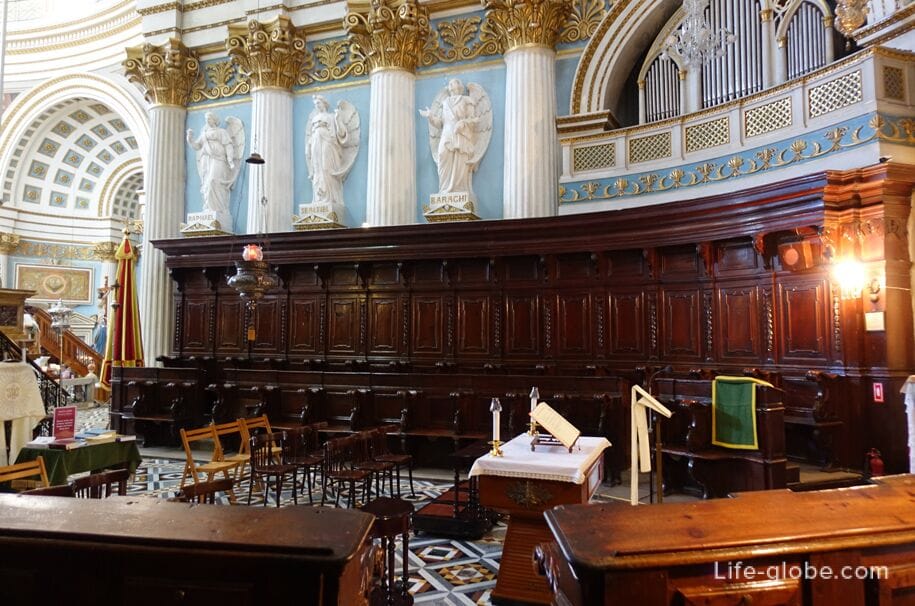
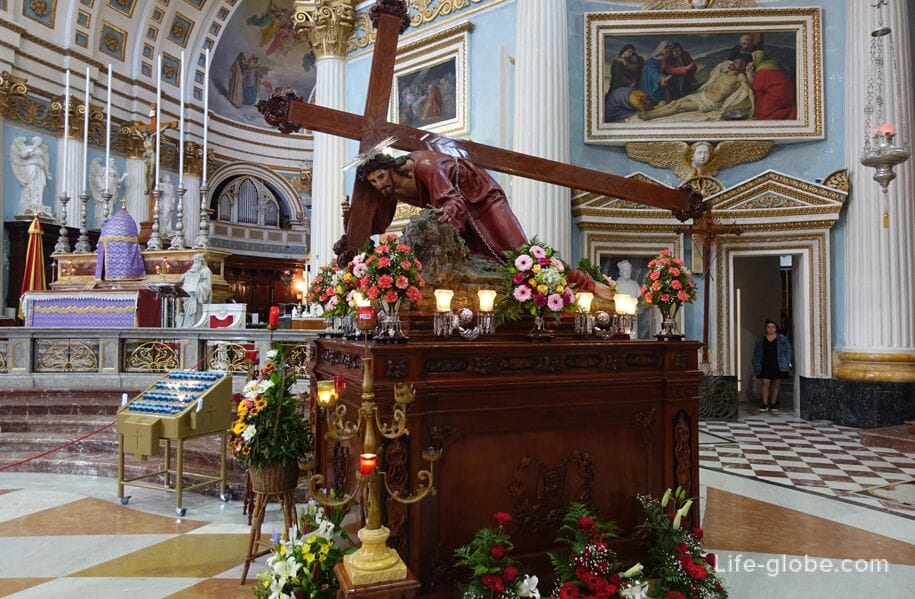


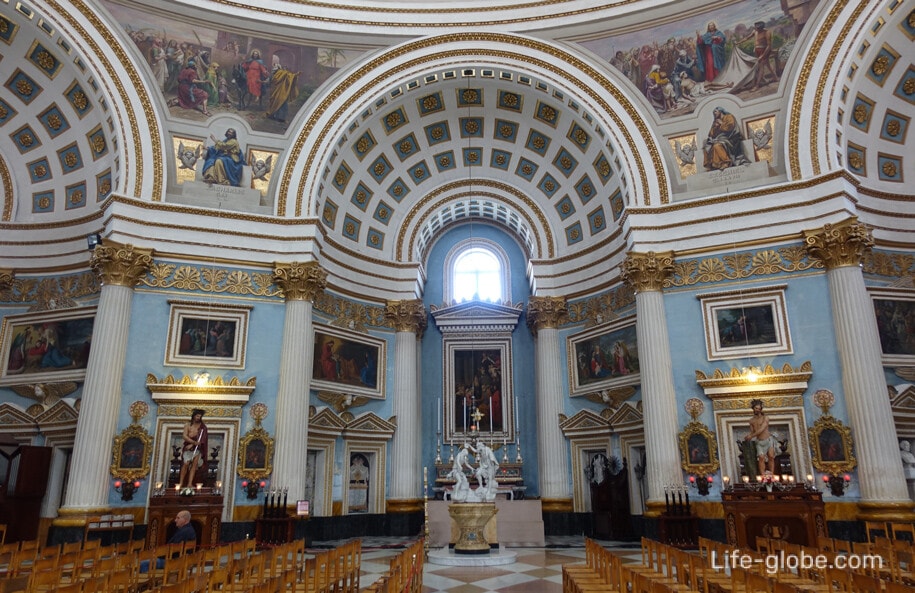
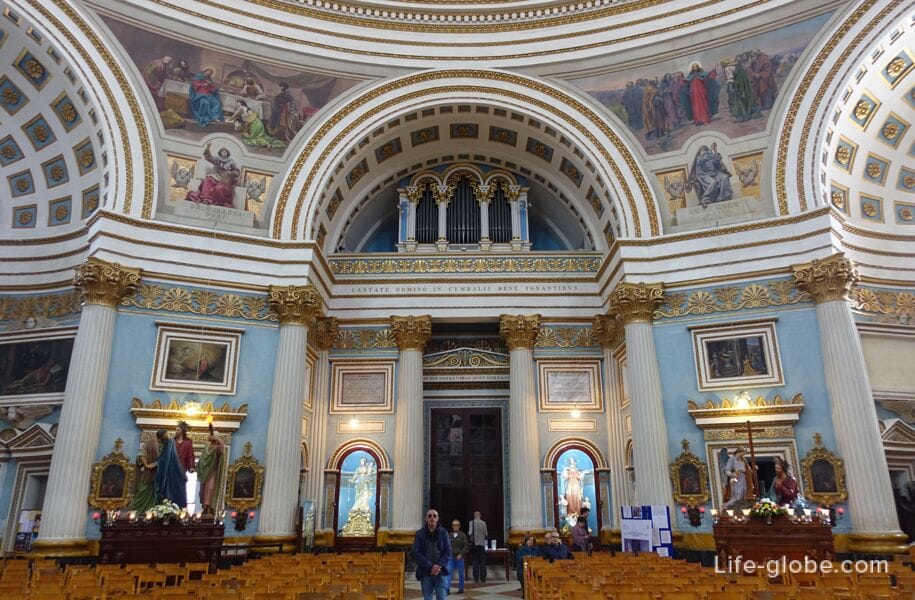
Dome

In the church you can visit the bomb museum, a wartime shelter and climb the portico.
Bomb Museum in the sacristy of the church
The Second World War was a terrible reality for the Maltese Islands, as Malta was one of the most bombed places in the world, and Mosta also had no hope of avoiding this tragedy.
Since Mosta was very close to Ta'Kali airfield, it was the target of enemy aircraft attacking the airfield. Bombs fell on houses and killed people.
During one of the raids, on April 9, 1942, when 302 people gathered inside the Rotunda Mosta church for Mass, one of the dropped bombs blew up the dome, crashed into the wall and fell to the floor in the church, but did not explode - not a single person was injured and the church survived. It was a miracle for Mosta, and later, to commemorate this event, a monument was erected in the sacristy of the church - a replica of the fallen bomb, so that everyone could remember what a wonderful intercession of the Virgin Mary was for them to save her and their church, as well as the lives of many people.
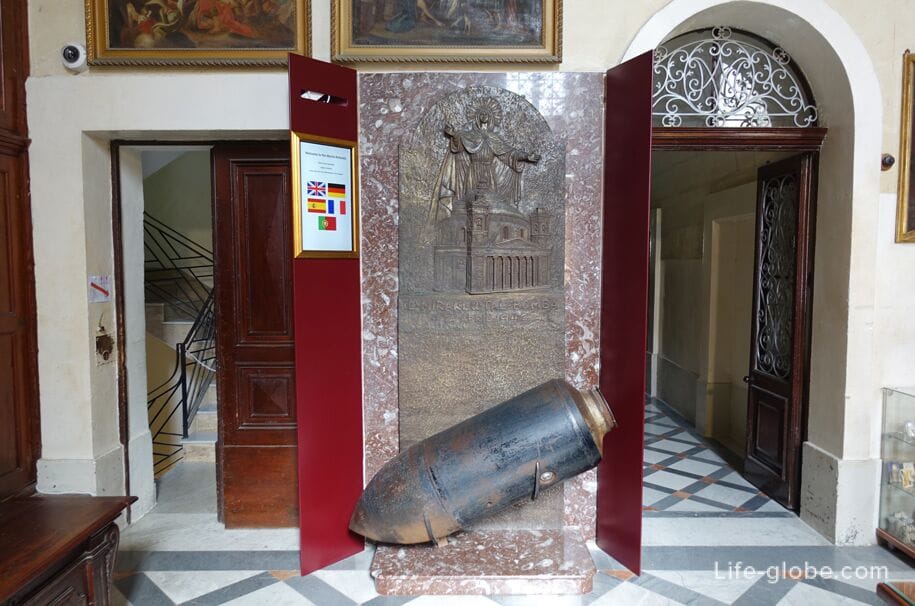
Reconstructed video of the bomb drop on the Mosta Rotunda
Also in the bomb museum are: a scale model of the church, paintings, clothing (vestments of priests) and other items.
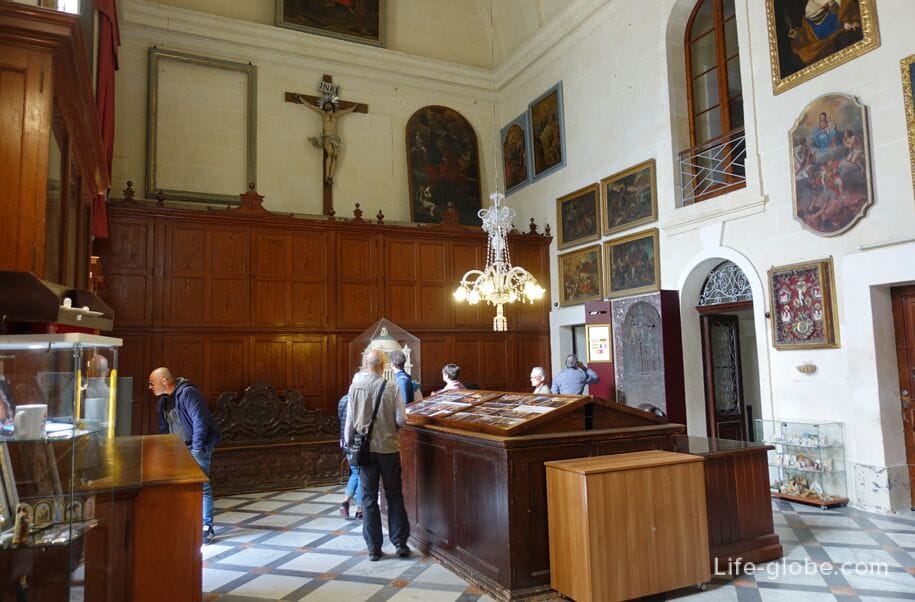


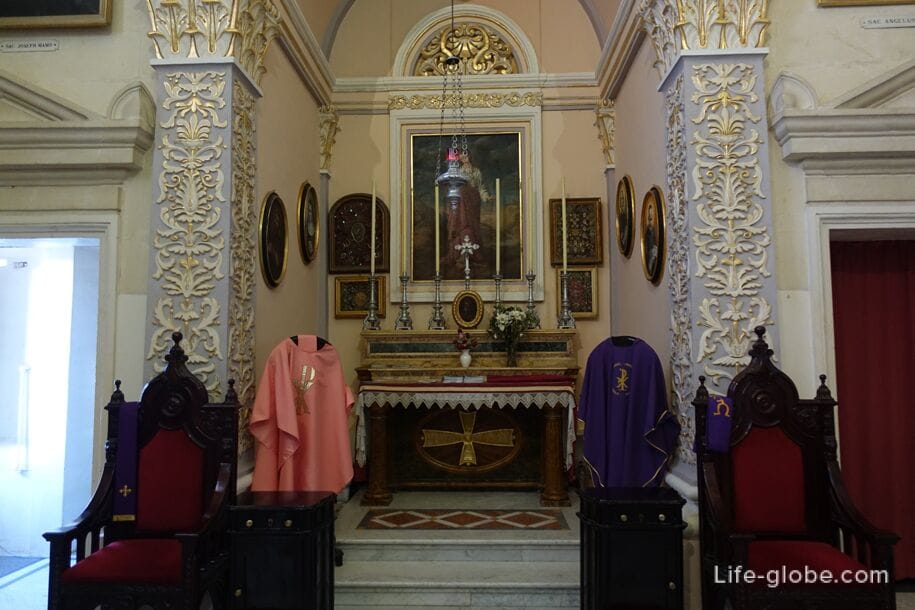
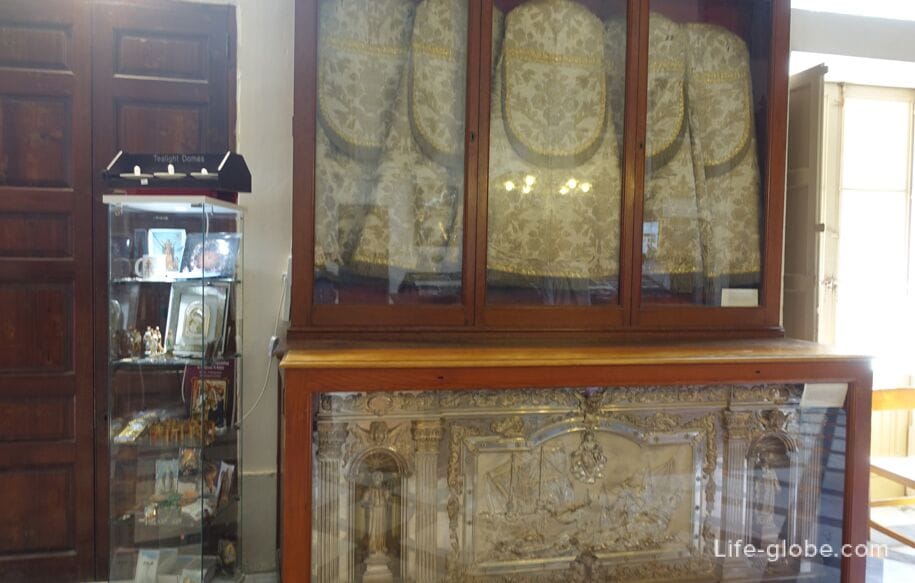
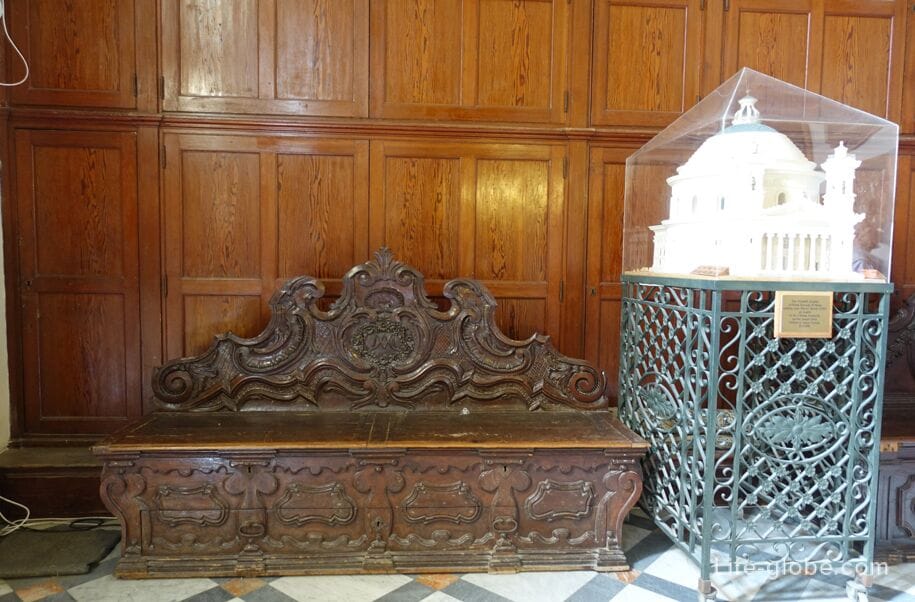
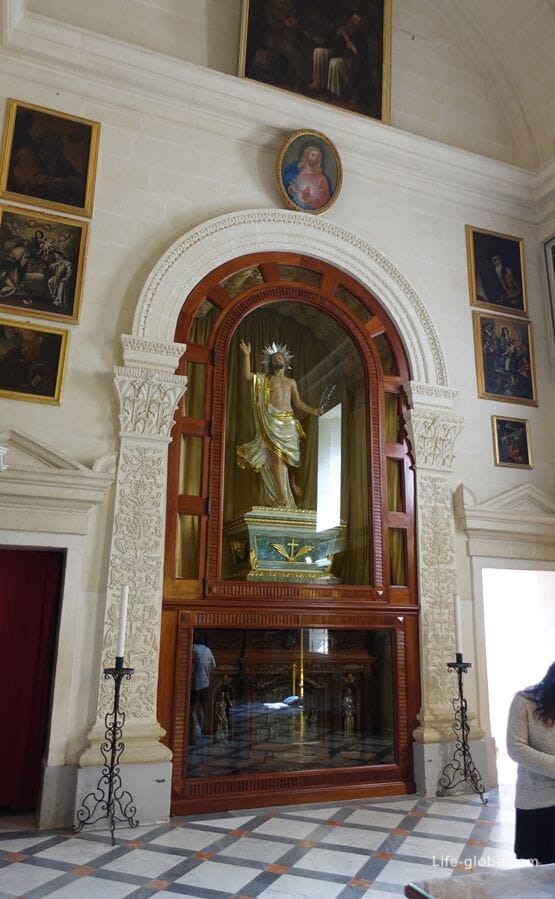
Observation deck in the Rotunda Mosta
In the church, you can climb to the inner and outer balcony of the dome of the Basilica, overcoming 74 steps at the same time.
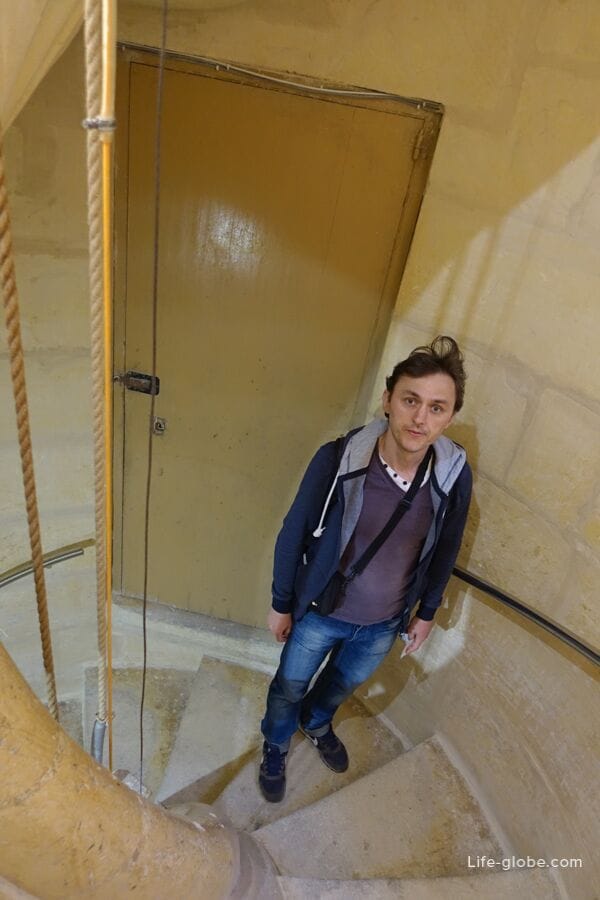
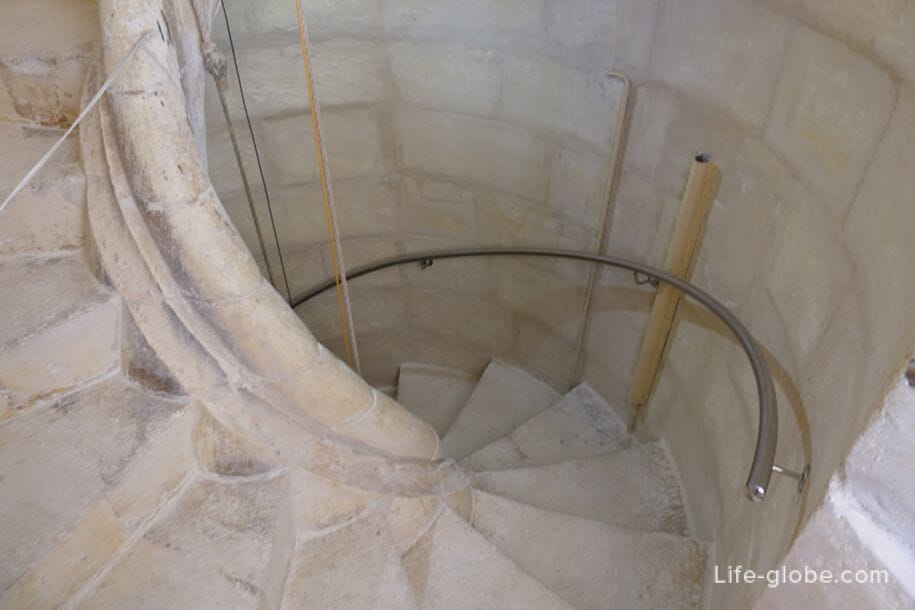
From the inner balcony of the dome, the huge dome itself and the main hall of the church are clearly visible.
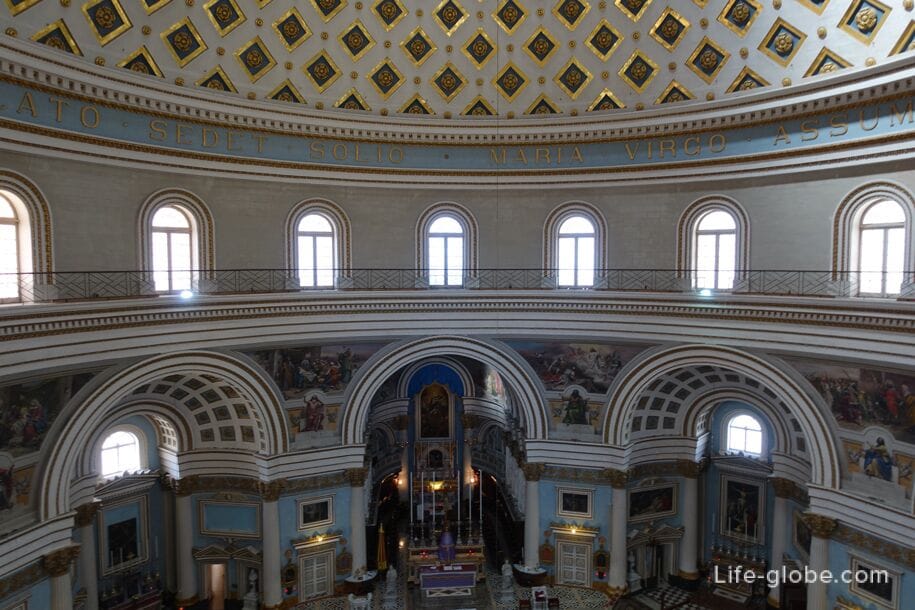
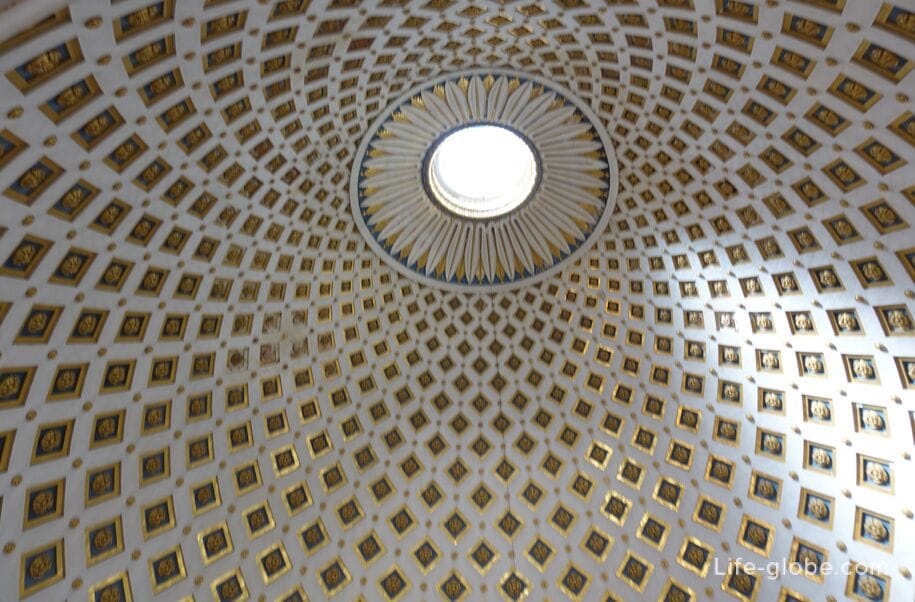
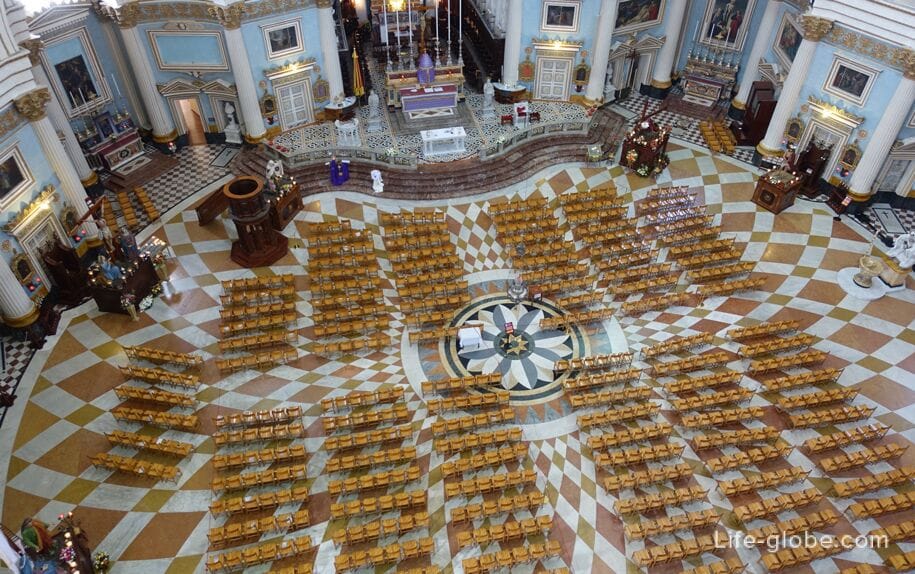
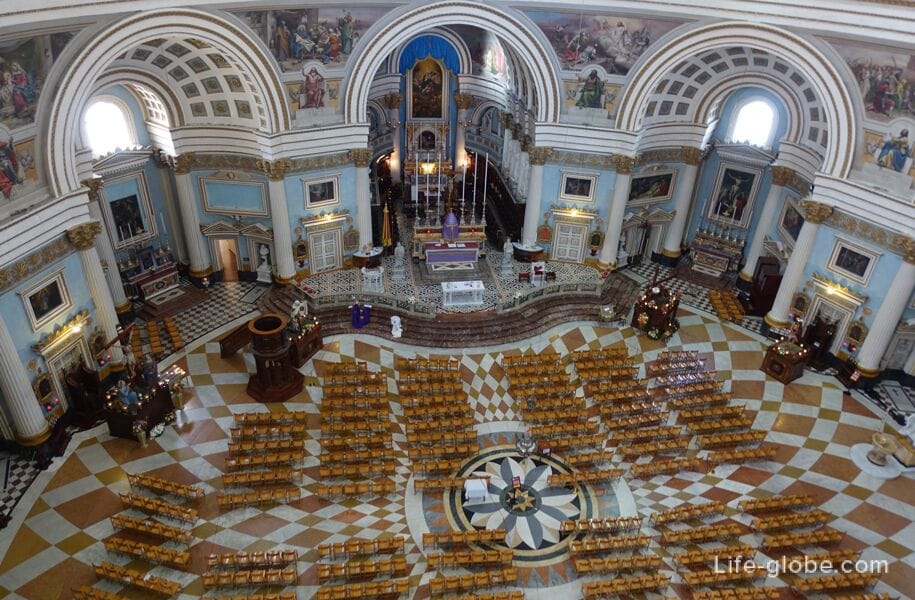
From the outer terrace of the dome, views of Mosta and the surrounding area open, you can also realize all the monumentality of the majestic portico and bell towers of the church.
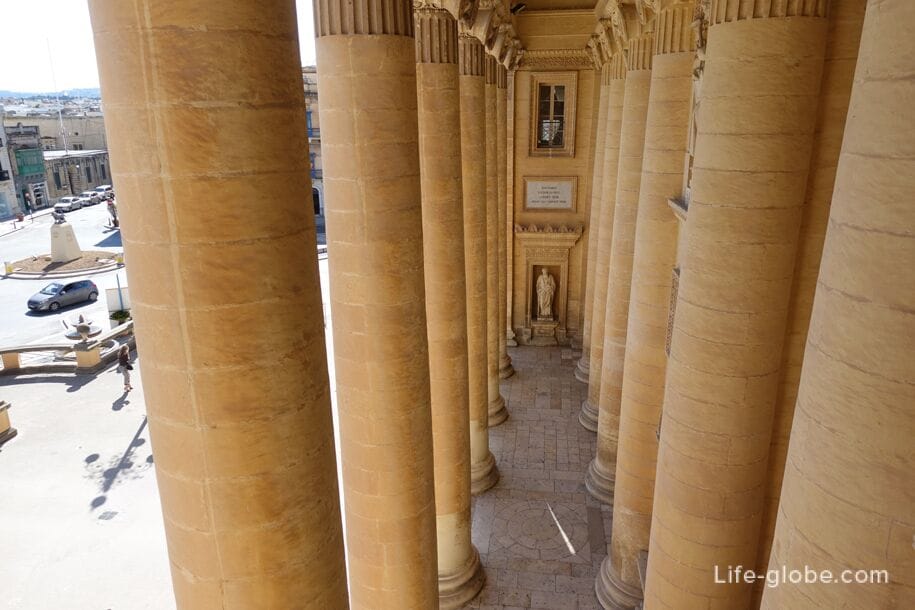
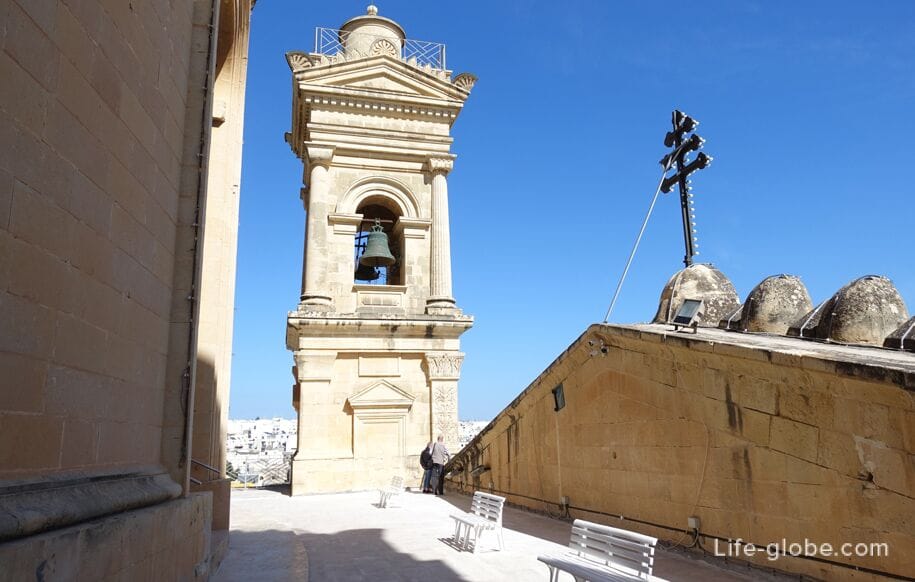
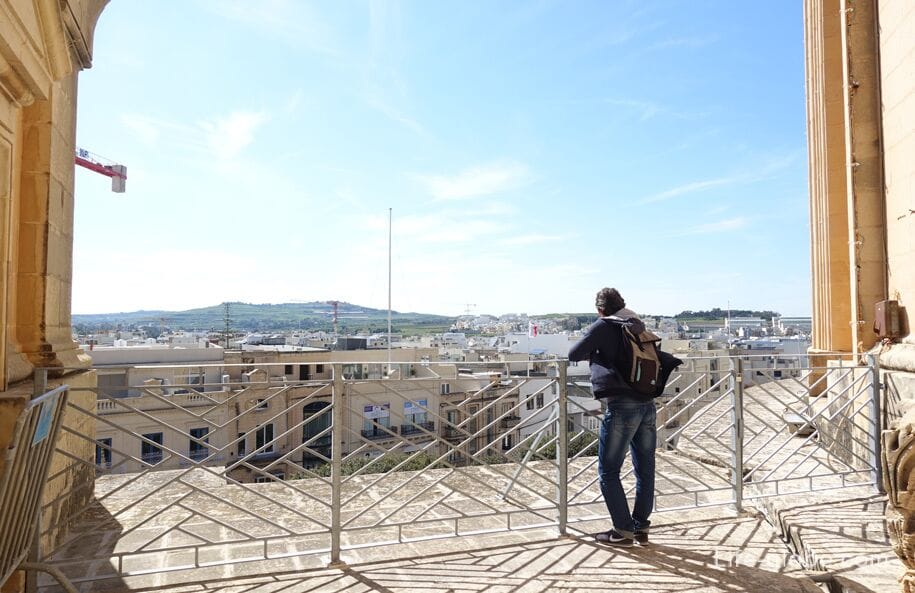
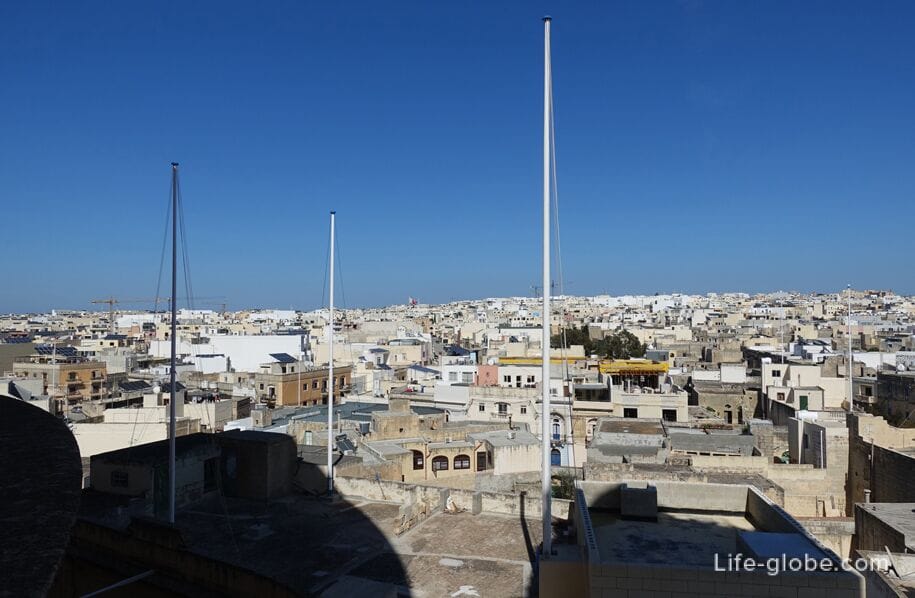
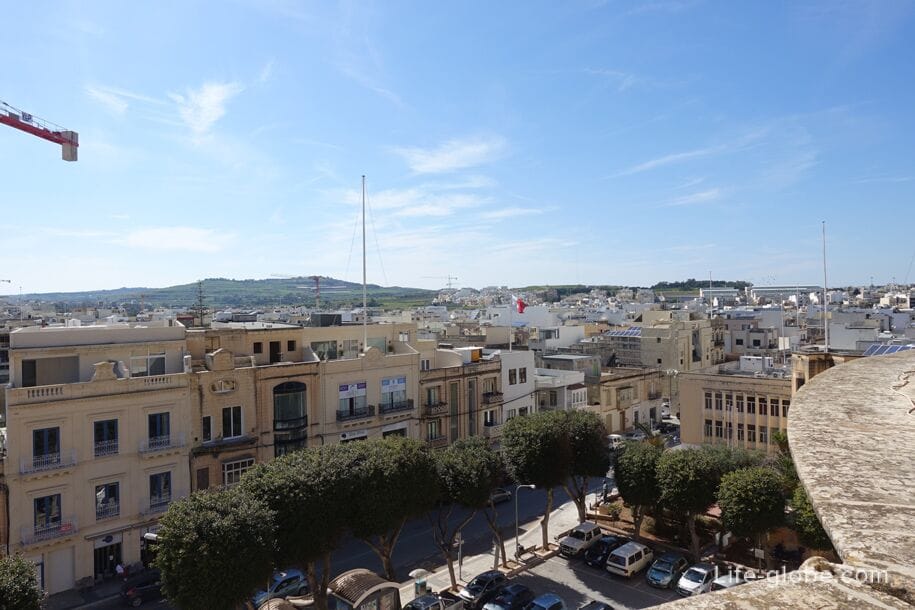
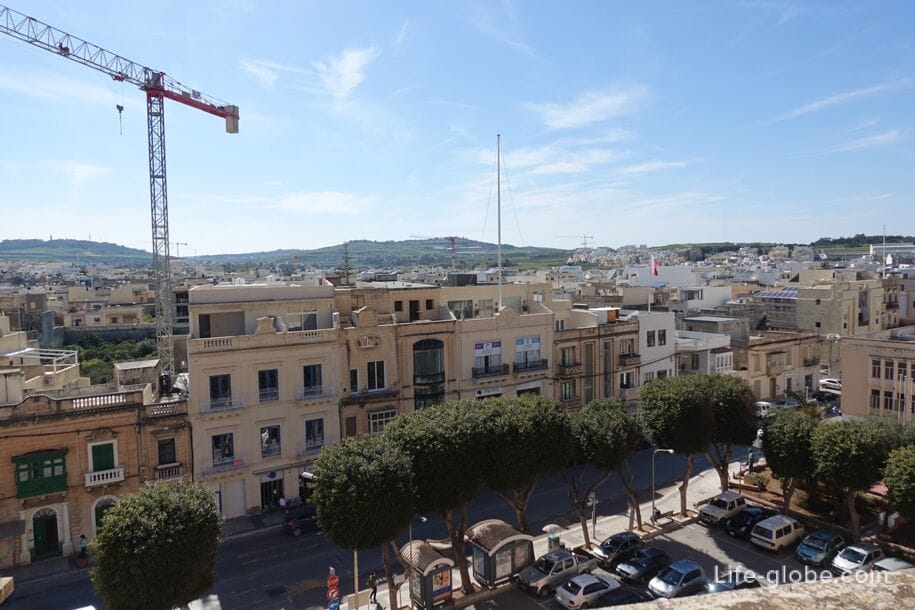
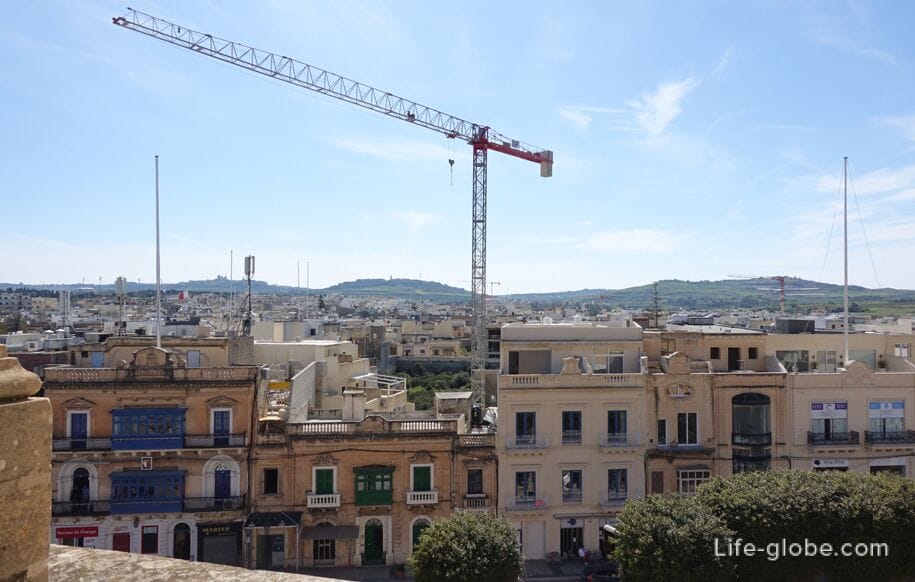
World War II Asylum
The World War II underground shelter, located under the parapet of the Mosta Basilica, was dug by hand by fifteen Mosta workers and was used at the end of the war to protect families from enemy bombs.
Today, this shelter is open to the public and contains two exhibitions: one of photographs of Malta during World War II, and the other of traditional Maltese instruments and a visual example of how people lived in this shelter.
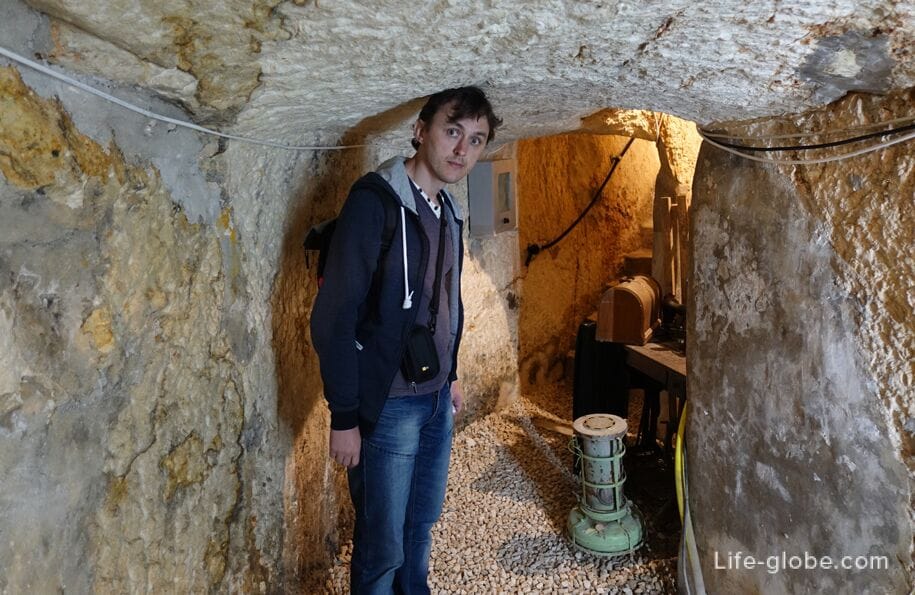
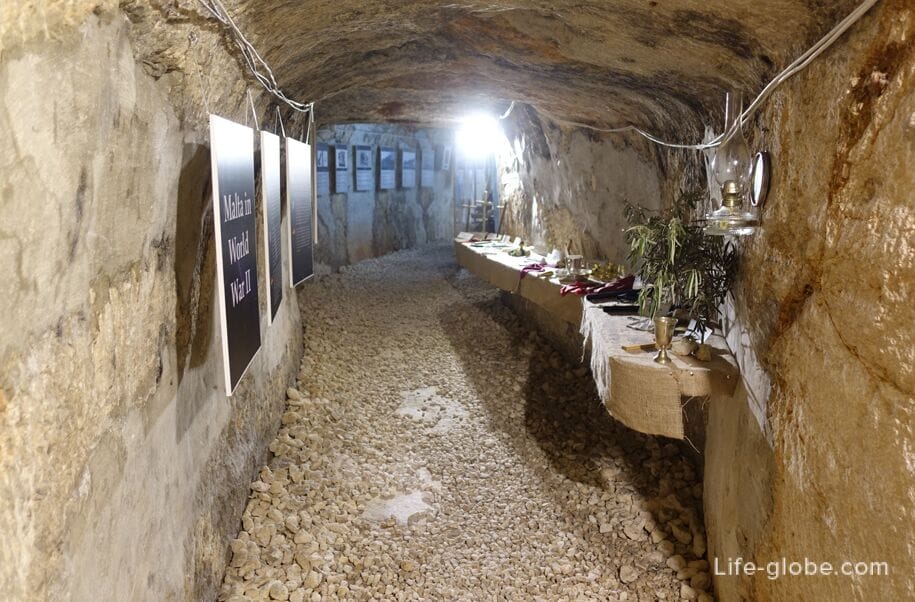
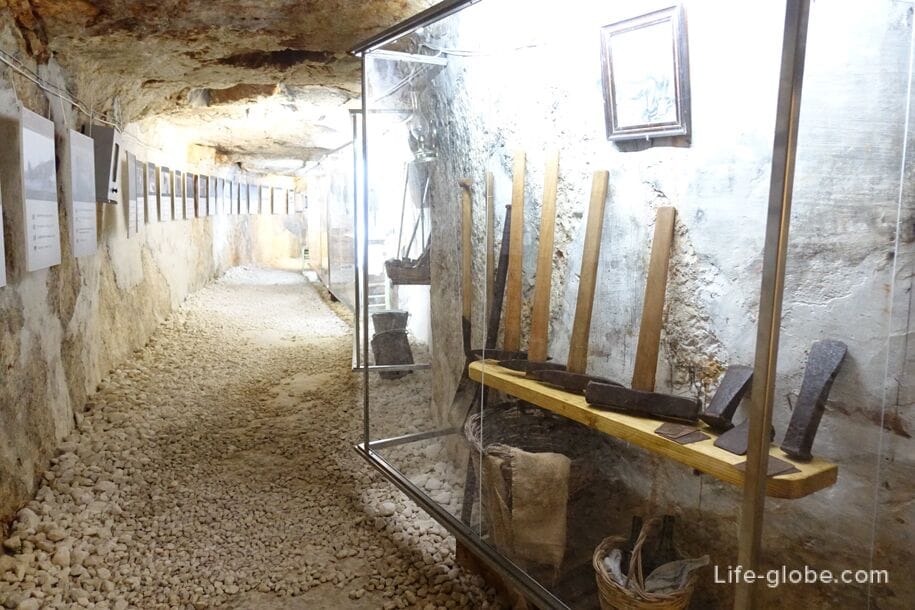
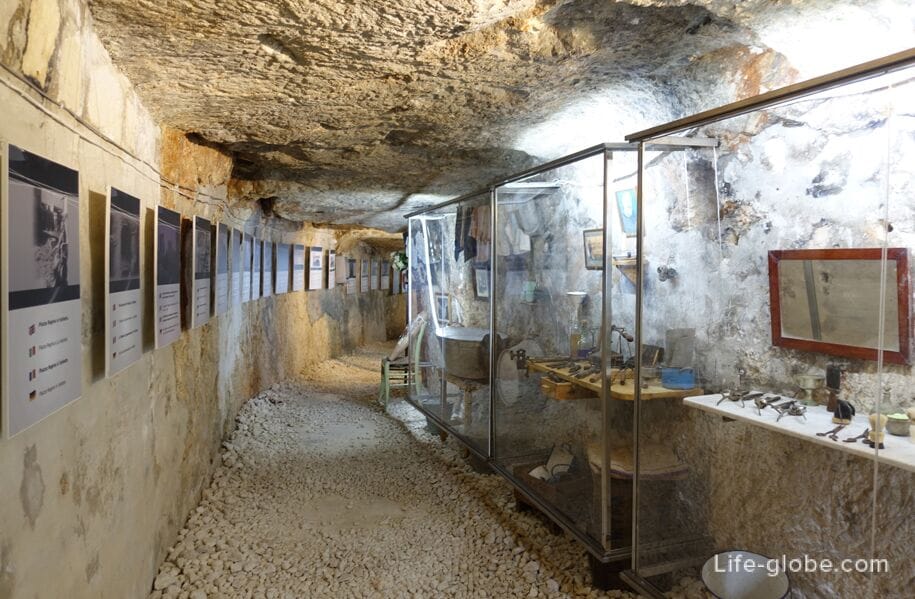
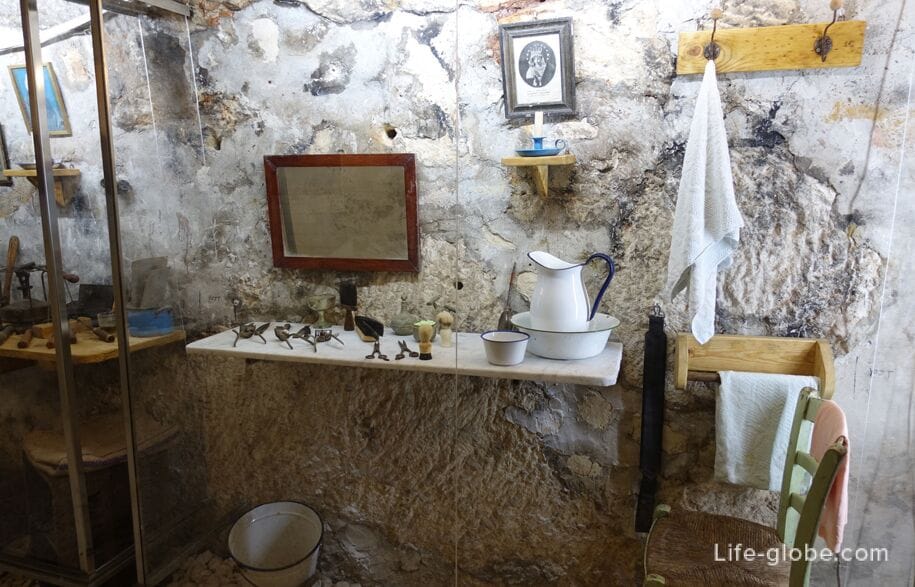

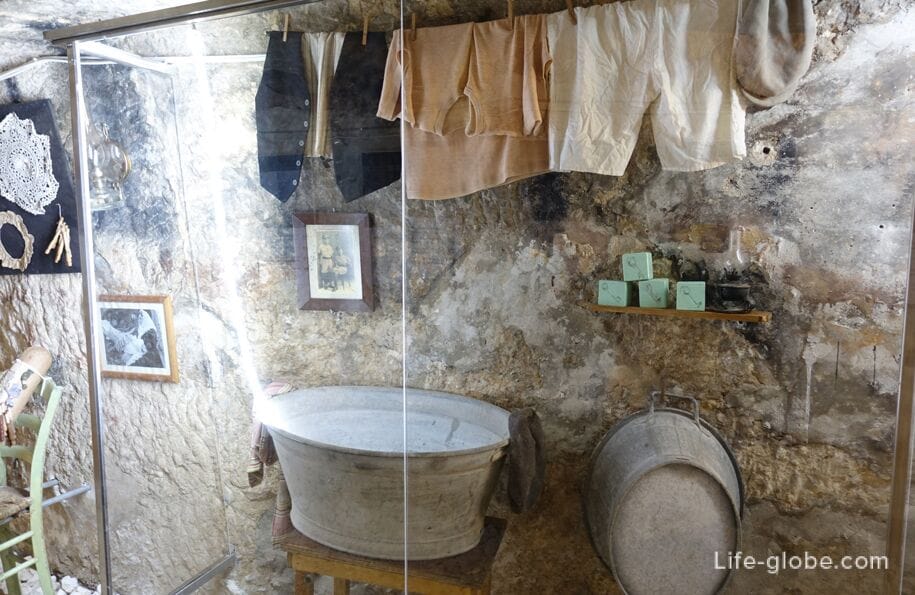


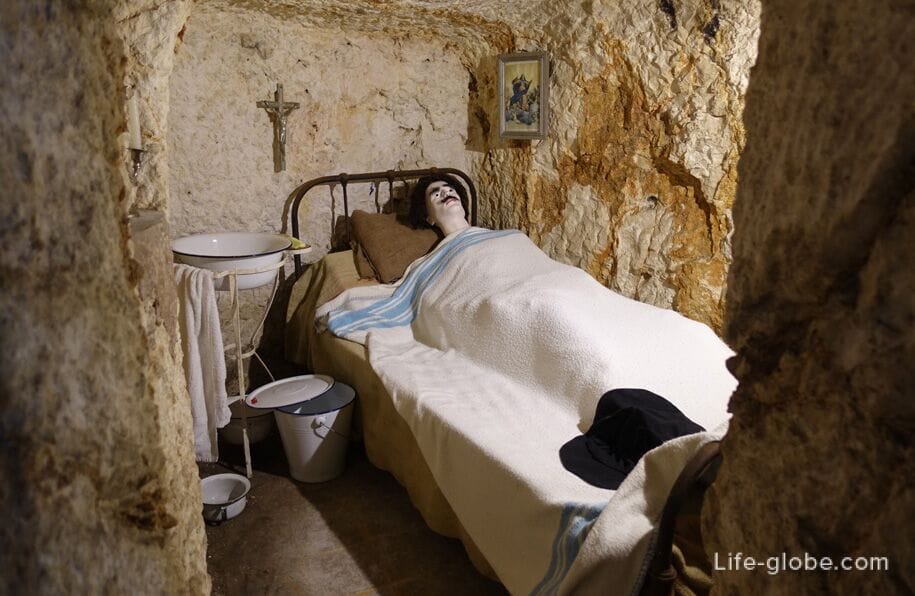
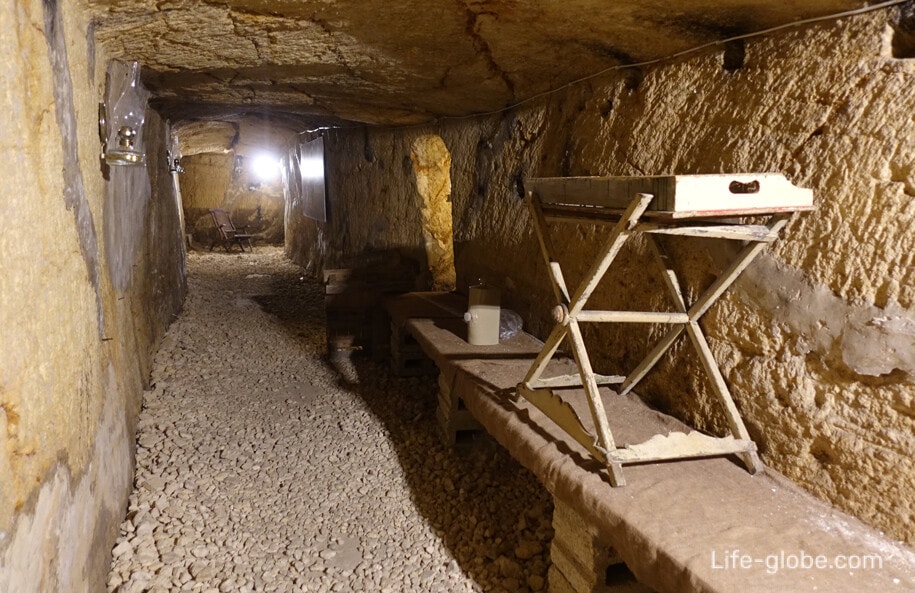
The entrance to the shelter is from the street and is located to the right (if you face the basilica) from the main entrance to the church.
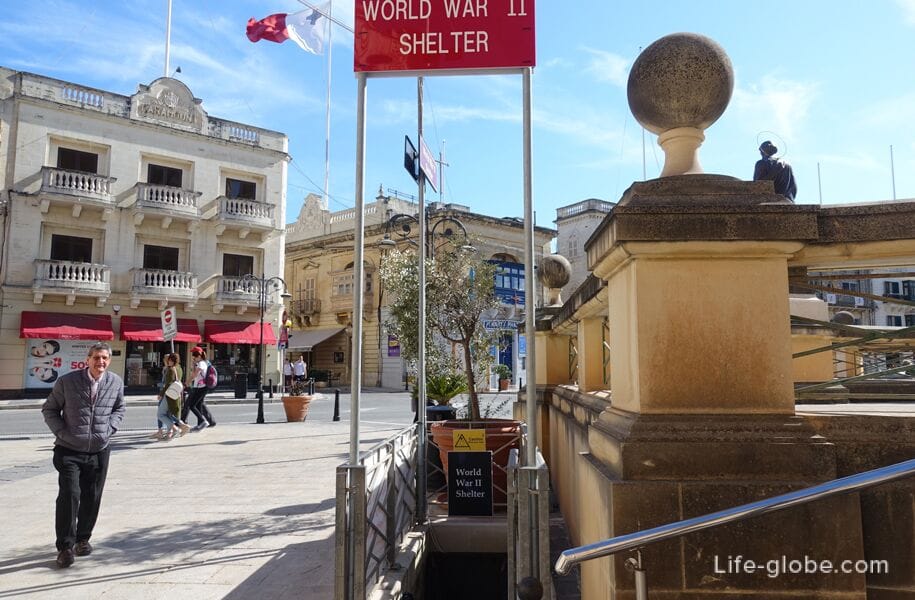
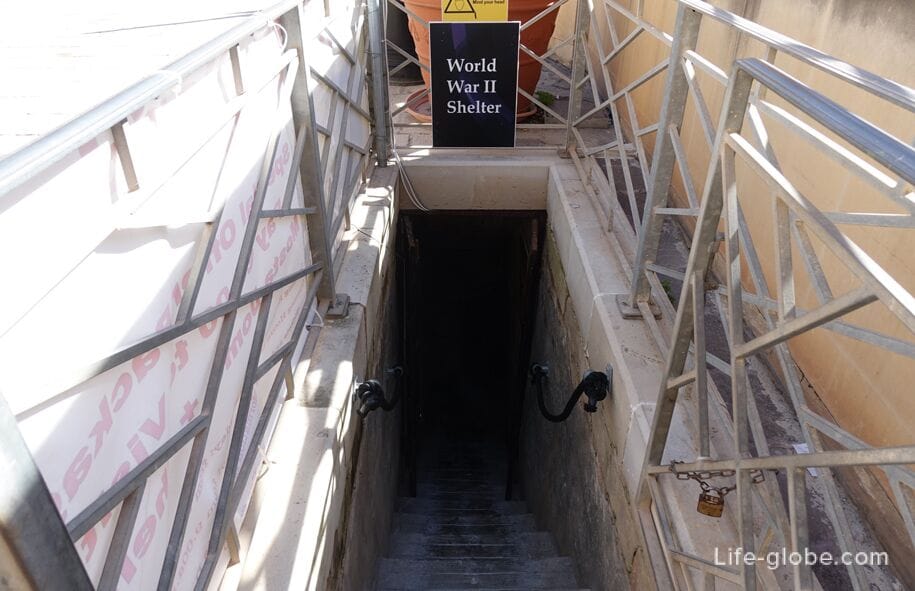
Practical information
Visits to the basilica, as well as the bomb museum in the sacristy, the observation deck and the World War II shelter are paid.
You can purchase a comprehensive ticket to all the objects of the church or, choosing one thing, visit this object of the basilica directly.
Tickets can be purchased directly at the church.
We recommend checking the exact cost of visits, opening hours of the church and other conditions on the official website of the Basilica of the Rotunda Mosta: mostachurch.
Coordinates of the Basilica Rotunda Mosta: 35°54'36.3"N 14°25'33.2"E (35.910083, 14.425889).
You can get to the church by public buses in Malta, including from Valletta, Slima and Melliehs. Malta public transport website: publictransport.
You can also visit the church on a guided bus tour of Malta with an audio guide. All tours of Malta, including bus and sea, can be viewed and purchased here →
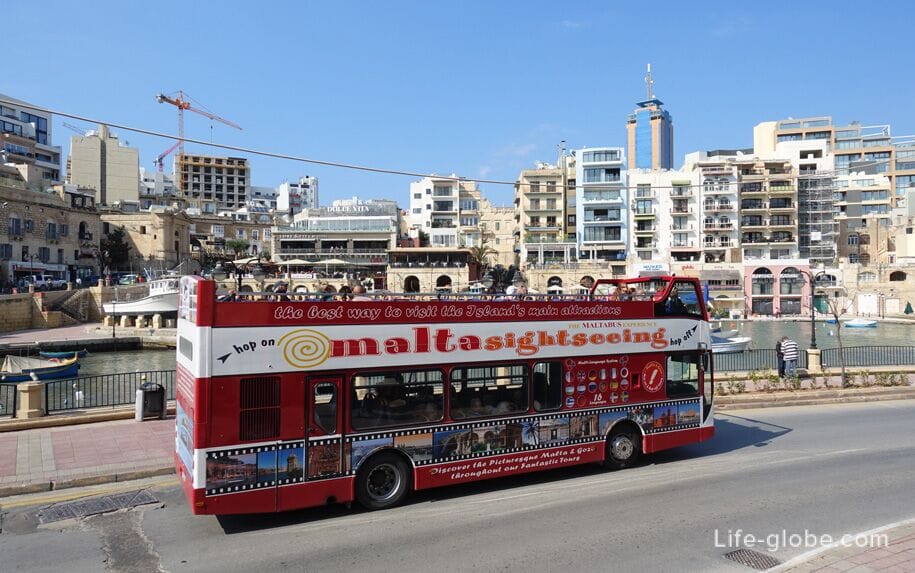
All accommodation facilities in Malta, including in Most, Valletta, Sliema, Melliehi and other places, can be viewed and booked here




